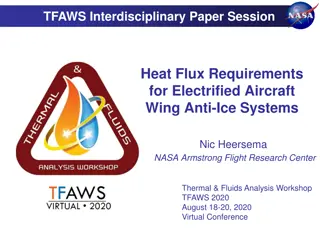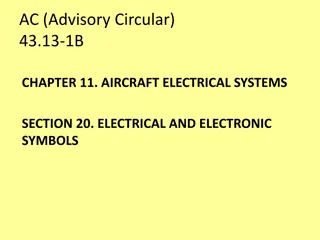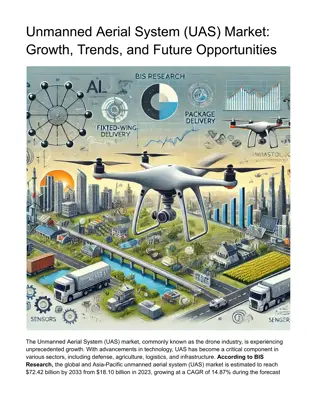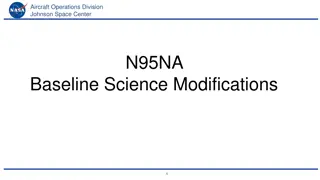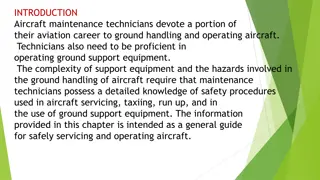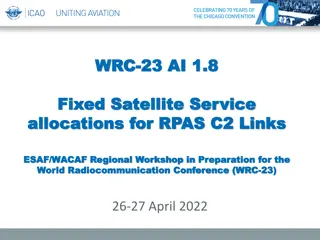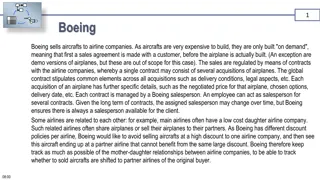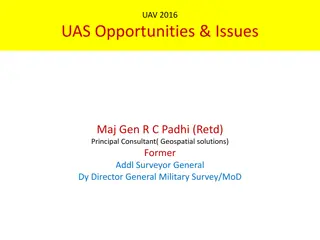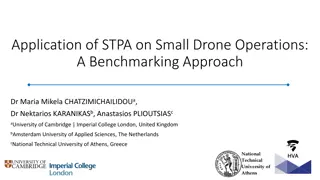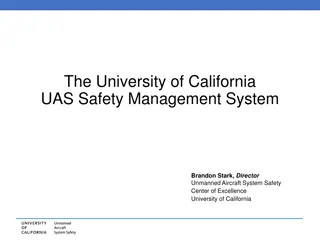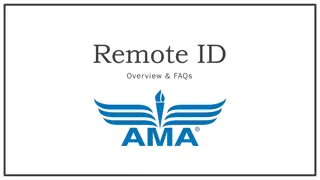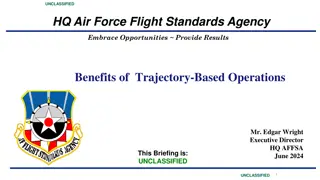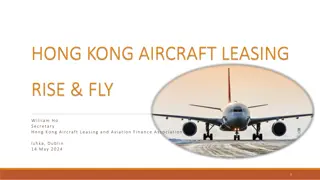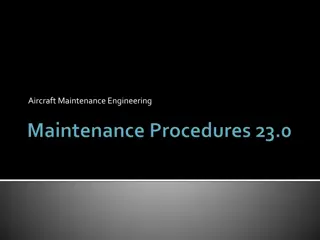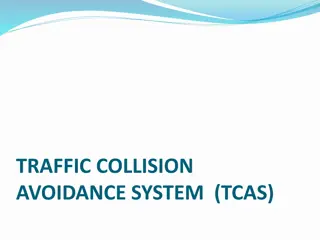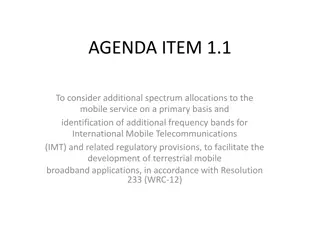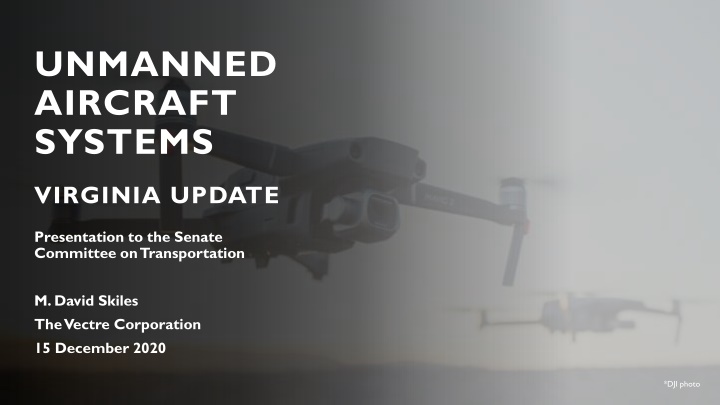
Unmanned Aircraft Systems in Virginia: Regulatory Overview and Current Laws
United States Government's sovereignty over airspace, FAA regulations on UAS pilots, key federal regulations for recreational and commercial use, and current Virginia laws regarding unmanned systems.
Download Presentation

Please find below an Image/Link to download the presentation.
The content on the website is provided AS IS for your information and personal use only. It may not be sold, licensed, or shared on other websites without obtaining consent from the author. If you encounter any issues during the download, it is possible that the publisher has removed the file from their server.
You are allowed to download the files provided on this website for personal or commercial use, subject to the condition that they are used lawfully. All files are the property of their respective owners.
The content on the website is provided AS IS for your information and personal use only. It may not be sold, licensed, or shared on other websites without obtaining consent from the author.
E N D
Presentation Transcript
UNMANNED AIRCRAFT SYSTEMS VIRGINIA UPDATE Presentation to the Senate Committee on Transportation M. David Skiles The Vectre Corporation 15 December 2020 *DJI photo
BACKGROUND AND DEFINITIONS Generally speaking, the United States Government has exclusive sovereignty over airspace of the United States ( 49 USC 40103(a)(1). The Federal Aviation Administration has maintained that A consistent regulatory system for aircraft and use of airspace has the broader effect of ensuring the highest level of safety for all aviation operations. To ensure the maintenance of a safe and sound air transportation system and of navigable airspace free from inconsistent restrictions, FAA has regulatory authority over matters pertaining to aviation safety. FAA Office of Chief Counsel States have limited authority when it comes to regulating unmanned aircraft systems. The FAA has issued guidance stating that a state can pass laws related to traditional police powers such as land use, zoning, trespass, and law enforcement operations. Examples of laws which would not be preempted by federal law include: Requirements for law enforcement to obtain a warrant for UAS surveillance (2015 General Assembly Session) Specifying UAS cannot be used for peeping (2017 General Assembly Session) Prohibitions on hunting with an UAS, or attaching a weapon to a UAS Both Federal Regulations and Virginia Code define UAS: Federal Definition: An aircraft operated without the possibility of direct human intervention from within or on the aircraft. Code of Virginia: 19.2-60.1 An aircraft that is operated without the possibility of human intervention from within or on the aircraft.
KEY FEDERAL REGULATIONS The Federal Aviation Administration oversees the rules and safety practices for UAS pilots. For the purposes of this presentation, there are two main categories: Recreational and Commercial. Many of the below requirements are outlined in H.R. 302 (2018) which is the FAA Reauthorization Act. Commercial Use: Recreational Use: Under 55 Pounds: Operators must adhere to a set of requirements under Part 107, including becoming an FAA- Certified UAS Pilot by taking a knowledge test, registering the UAS with the FAA, and adhering to the Part 107. Some operations are not covered by Part 107 and include a waiver. Over 55 Pounds:Section 347 of H.R. 302 replaces previous Section 333 Exemption for UAS over 55 Pounds. FAA reviews applications and makes a determination. Operator Must: (i) Register UAS; (ii) Mark UAS with Reg. Number; (iii) Fly only for recreational purposes; (iv) Follow safety guidelines of a community-based organization. Operator must also keep UAS in line of sight, and fly UAS at or below 400 feet when in uncontrolled or Glass G airspace. Operator must also take the FAA Know Before You Fly Knowledge Test. This test is still in development.
CURRENT VIRGINIA LAWS REGARDING UNMANNED SYSTEMS 2016 Session 2013 Session A myriad of bills related to privacy and trespass. None of these bills passed, and were instead referred to the Crime Commission for study. While the Crime Commission did not end up studying these privacy bills, then House Courts Chairman Dave Albo sent a letter to the Boyd Graves Conference asking for them to undertake a review of the privacy legislation. House Bill 412 (Kilgore) Created a moratorium on local governments regulating unmanned aircraft systems. The bill had a July 1, 2019 expiration. Moratorium on the use of UAS by public bodies until July 1, 2015, except in emergency situations or training exercises. 19.2-60.1 relating to use of unmanned aircraft systems by public bodies, and the requirement of a search warrant. This language created exceptions such as emergency situations, search and rescue, armed forces, and research. This legislation created the statutory definition of UAS in the Code of Virginia. Several privacy related bills introduced which mirrored 2016 legislation. None of these bills passed, with the exception of House Bill 2350 (Minchew) which established a Class 1 Misdemeanor to peep or spy with an electronic device . The UAS Industry committed to General Assembly to work on privacy issue and bring a solution forward during the 2018 Session. SB 873 (Marsden): Provided a fire chief or other officer in charge of maintaining order to take control of immediate airspace where there is imminent danger or the actual occurrence of fire or explosion or the uncontrolled release of hazardous materials that threaten life or property. 2017 Session 2015 Session
2018 Session: Three main bills - House Bill 638/Senate Bill 526 & Senate Bill 307 Senate Bill 307: Established the Unmanned Aircraft Systems (UAS) Workgroup at DOAV. House Bill 638/Senate Bill 526 had several provisions: Made permanent the prohibition on local governments (political subdivisions) regulating unmanned aircraft systems. Established a Class 1 Misdemeanor for trespassing with a UAS Prohibits an individual on the Sex Offender and Crimes Against Minors Registry from using a UAS to follow or contact another person without permission of such person. Statute also prohibits Prohibits a respondent of a protective order from using a UAS to follow, contact, or capture images of the petitioner of the protective order. 2018 SESSION
2020 SESSION: HOUSE BILL 742 (BULOVA) House Bill 742 directed the Department of Aviation to develop a model ordinance which political subdivisions can adopt. The legislation created certain exemptions for both commercial and recreational purposes. For example, if a UAS was having on- board technical issues, an operator could not be penalized for landing in a restricted area. House Bill 742 (Bulova) sought to loosen the statewide preemption which passed during the 2018 Session. The concern expressed by Del. Bulova was that the language did not provide localities with any flexibility to determining reasonable time, place, and manner restrictions. It is important to note that these restrictions relate to the use of the property, not an attempt to regulate the airspace. House Bill 742 also requires that if a political subdivision chooses to move forward with adopting the model ordinance, that information will be furnished to the Department of Aviation, and an online registry of all political subdivisions will be made public. The legislation included a delayed effective date of January 1, 2021 to provide the Department of Aviation time to craft the model ordinance.
This legislation was mainly focused on fixed-wing aircraft and the period of time they can be in the Commonwealth before they must register with the Department of Aviation. The aircraft registry is really focused on having the information for tax purposes, as a fixed-wing, manned aircraft is a source of revenue for personal property tax. The legislation also sought to make clear in the Code of Virginia that unmanned systems do not need to register with the Department. This would be both incredibly burdensome and expensive for the Department of Aviation, and provide little value to the Commonwealth. 2020 SESSION: SENATE BILL 356 (COSGROVE) Ultimately, Senate Bill 356 did advance but due to some last-minute amendments, the language regarding unmanned systems was removed from legislation. This issue is looking to be addressed this coming session by legislation patroned by Delegate Delaney (D-Fairfax) and Senator Favola (D- Arlington), and simply makes clear that the registration requirement included in the Code of Virginia does not apply to unmanned aircraft systems.
STATUS OF HB 742 Director Flynn and his team have been working hard over the interim, and the draft is currently going through its regulatory process. It will be posted to Townhall for public comment soon.
GOVERNMENT & INDUSTRY WHERE IS IT HEADED? Remote Remote Identification (Remote ID) will allow the enforcement, and federal agencies to identify UAS in the airspace. The FAA has issued the Notice of Proposed Rulemaking with comments due by 2 March 2020. DJI has launched its Remote ID technology Aeroscope which is deployed by a number of law enforcement agencies and airports. Identification: Virginia Tech s Mid-Atlantic Aviation Partnership (MAAP):Program designed to look at ways for the safe integration of unmanned aircraft systems into the national airspace. Part of this effort is coordinating with the President s 2017 Unmanned Aircraft Systems Integration Pilot Program, which seeks to identify ways to provide a mechanism for state and local officials to provide input into a UAS policy framework. ADS-B: Automatic dependent surveillance broadcast is a technology in which an aircraft determines its position via satellite navigation and periodically broadcasts it, enabling it to be tracked. This technology is present in DJI UAS platforms and will assist with the safe integration of UAS into the airspace by providing situational awareness of manned aircraft such as planes and helicopters. FAA, law (NPRM), known as - One concern with Remote ID Rulemaking is ADS-B would be prohibited. FAA - Section 2209:Requires the FAA to develop an application for entities to request that the FAA "prohibit or restrict the operation of an unmanned aircraft in close proximity to a fixed site facility." The section describes "fixed site facilities" as critical infrastructure, oil refineries, chemical facilities, amusement parks, and other locations that warrant such restrictions. Geofencing:Industry leaders have been adding innovative safety tools into their products without an FAA mandate. For example, geofencing prevents pilots from flying in areas deemed as off- limits, such as airports, military installations, and sports stadiums. - RID Rulemaking issued on 12/31/19: Industry still reviewing and unpacking. Has a long way to go before final rulemaking is issued. Five years is the estimated timeline for RID completion.
EXAMPLE OF GEOFENCING Some DJI Technology to Secure Airspace: Automatic Return-to-Home UAS Returns Home When Issue Arises Altitude Limits Limits Altitude of UAS Obstacle Avoidance Geofencing Restricting Certain Areas DJI AirSense Detects Airplanes/Helicopters DJI Aeroscope Precursor industry solution to Remote ID Example of Geofencing Graphic from Uplift Drones (2018)
ISSUES FOR STATE POLICYMAKERS Protecting Virginia's Status for UAS Rapidly Evolving Technology Constituent Concerns Some complaints received by constituents regarding unmanned aircraft systems operating near their home. It is important to note that federal law addresses a number of these issues, but continued patience is needed by state policymakers as the FAA continues to work on several key rulemakings which address issues such as protecting (geofencing) critical infrastructure. Both the Federal Aviation Administration and countless court opinions have clearly established that the U.S. Government maintains control of the airspace. With this, the FAA continues to work on innovative rulemakings which will help keep the skies safe and address several key issues. lawmakers have expressed Virginia is generally viewed as a favorable regulatory environment for unmanned aircraft operations. recognized through the selection of Virginia for several FAA programs. Virginia s current regulatory environment is one of the key reasons for this recognition. Lawmakers should protect this status but being careful when considering UAS policy. Emerging technology means policymakers are always confronted with the need to update statutes to address new types of technology, while being careful to avoid overly prescriptive or burdensome rules which can stifle innovation. This status is
RESOURCES/QUESTIONS A few helpful resources on Unmanned Aircraft Systems Regulations: Federal Aviation Administration Advisory Announcements Issued Regularly from U.S. DOT David Barry at DLS prepared Virginia s Legal Landscape for UAS Department of Aviation Director Mark Flynn organizes and manages the SB 307 Workgroup dealing with UAS Policy. It is important to recognize a few other industry representatives who are very engaged in UAS policy at the state level: Patrick Cushing of Williams Mullen and Michele Satterlund of McGuireWoods representing the Unmanned Systems Association of Virginia (USAV) Guy Rohling of Albers & Company representing Google Troy Murphy of the Northern Virginia Technology Council (NVTC) Bud Oakey of the Virginia Aviation Business Alliance (VABA) Questions?





